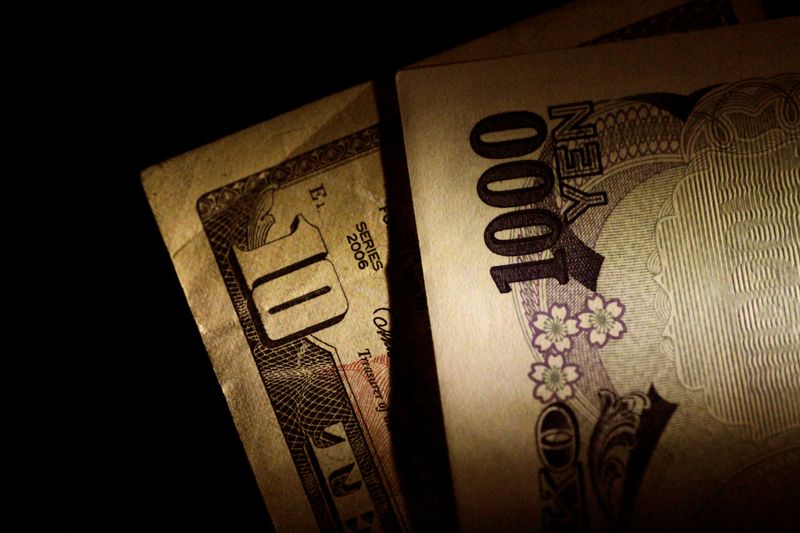By Gertrude Chavez-Dreyfuss
NEW YORK (Reuters) -The U.S. dollar fell against most currencies on Thursday, pressured by softening data in the world’s largest economy that support expectations the Federal Reserve will start cutting interest rates this year.
The yen rose from a 38-year low against the dollar on the back of the US data, even as traders remained on high alert for signs of Japanese intervention to support the currency.
U.S. reports showed that jobless claims for state unemployment benefits fell to 233,000 in the week ending June 22. However, the number of people receiving benefits after an initial week of relief rose by 18,000 to 1.839 million in the week ending June 15.
At the same time, new orders for key U.S. manufactured capital goods fell unexpectedly in May, indicating that corporate spending on equipment weakened in the second quarter.
Orders for non-defense capital goods, excluding aircraft, fell 0.6% last month, the data showed. Economists polled by Reuters had forecast orders for core capital goods to rise 0.1%.
More data showed that economic growth slowed sharply in the first quarter. Gross domestic product rose last quarter at a slightly upwardly revised 1.4% annual rate, but lower than the 3.4% recorded in the last three months of 2023.
The GDP report also showed weak consumer spending. US consumption growth was revised down to 1.5%, from the previous estimate of 2%.
“It appears that markets are focusing more on the loss of personal consumption than anything else. This would certainly be a sign of a slowdown in the US economy,” said Helen Given, currency trader at Monex USA in Washington.
“First quarter GDP is below red-hot numbers, but such a downward revision in consumption shows that a further slowdown may be on the way.”
YEN WOES
In afternoon trading, the yen rose slightly against the dollar at 160.765 per dollar, after falling to a low of 160.88 on Wednesday, its weakest level since December 1986.
The Japanese currency is down about 2.1% this month and 12% so far this year against a resilient dollar as it continues to be plagued by wide interest rate differentials between the US and Japan. That has prompted investors to use the yen as a financing currency for carry trades.
In a carry trade, an investor borrows in a currency with a low interest rate and invests the proceeds in higher-yielding assets.
Still, the yen’s latest slide past the key level of 160 per dollar has kept traders nervous about a possible intervention from Tokyo, after authorities spent 9.79 trillion yen ($60.94 billion) in late April and early May to push the yen by to increase 5% from its highest level. then a 34-year low at 160,245.
Analysts said that while the risk of intervention has increased, Japanese authorities could wait for the release of the US personal consumption expenditure (PCE) price index on Friday before entering the market. Still, any intervention would likely have a limited effect, they said.
“The Bank of Japan is known to act on Friday, but the best-case scenario would be a significant slowdown in US inflation, supporting calls for a Federal Reserve rate cut this year,” said Michael Boutros, senior FX analyst. at Forex.com.
Elsewhere, sterling rose 0.2% to $1.2643, while the euro rose 0.2% to $1.0704.
The euro is on track to lose around 1.4% this month, pressured by political unrest in the euro zone ahead of early elections in France starting this weekend.
Yields fell 0.1% to 105.91, not far from a nearly two-month high of 106.13 on Wednesday.
However, the US currency’s losses were broadly limited by comments from Atlanta Fed President Raphael Bostic, this year’s Federal Open Market Committee (FOMC) constituent.
In an essay published Thursday, Bostic said as things stand, “I continue to believe that conditions will likely require a reduction in the Federal Funds Rate in the fourth quarter of this year.”

In other developments, Wednesday was the last day for investors to trade currencies for the quarter, as spot currency settlement takes two business days.
Trading in U.S. stocks moved to a shorter settlement cycle last month, known as T+1.


